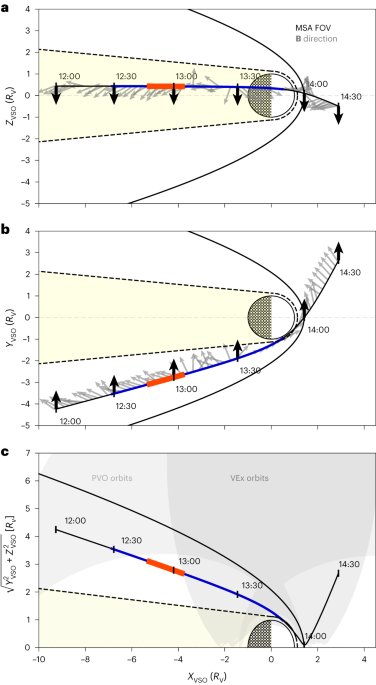A new study published in Nature Astronomy reveals recent data from the BepiColombo space probe, which is on its way to Mercury - and there is intriguing information about Venus' atmosphere.

The research indicates that significant quantities of gases, including carbon and oxygen, are being released from the atmosphere. This discovery, obtained during a flyby, highlights the unique characteristics of Venus' atmosphere and its magnetic environment.
Venus, unlike Earth, does not have a stable, intrinsic magnetic field to protect its atmosphere. The Earth's magnetic field is generated by the movement of molten material in its core, but Venus has no such internal dynamics due to its colder interior. Instead, Venus has a weak, comet-like magnetosphere that is influenced by sunlight. This sunlight charges atmospheric atoms, creating electrical currents and an unstable magnetosphere that depends on solar activity.
During its flyby in August 2021, the BepiColombo spacecraft spent 90 minutes passing through the fragile magnetosphere of Venus. The mission's main objective was to use Venus' gravitational pull to decelerate and adjust its trajectory towards Mercury.
However, the flyby also allowed scientists to collect valuable data about Venus. They observed that charged particles, or ions, were being leaked from the planet's atmosphere by sunlight, which accelerates atmospheric molecules to speeds high enough to overcome Venus' gravitational pull.
Lina Hadid, one of the main researchers at the Plasma Physics Laboratory in France, explained: "These ions are heavy and normally move slowly, so we are still trying to understand the mechanisms at play." This phenomenon suggests complex interactions between solar radiation and Venus' atmosphere, contributing to the continuous loss of atmospheric gases.
Venus' atmosphere is thick and predominantly composed of carbon dioxide, with small amounts of nitrogen and other trace gases. Previous studies have identified oxygen on both the night and day sides of Venus, with concentrations that vary with solar radiation levels. BepiColombo's recent findings help deepen our understanding of this dynamic, suggesting that the planet's atmosphere has been evolving and losing water over time.
"Investigating these molecules and their escape mechanisms is crucial to understanding how the planet's atmosphere evolved and how it lost all its water," added Dominique Delcourt, another researcher involved in the study.





